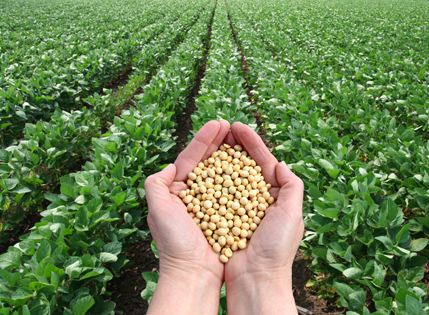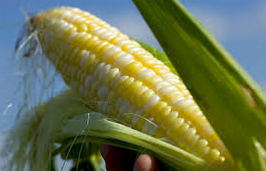Category: Grains

Kottke Commodities – U.S. Crops, World Demand Both Probable Records
July is the make-or-break month for U.S. corn, as well as immediately ahead of the counterpart period for soybeans. After burgeoning world demand stripped the big South American soybean crop bare in only five months, and Brazil’s corn production shrank, the consequences of a merely modest problem in the U.S. harvest would have been extremely serious. Widespread publicity of “La Nina,” an unusual eastward shift of warm water in the Pacific Ocean associated with poor growing conditions inNorth America, had the world food market particularly on edge. Prices of both corn and soybeans rose sharply in June in apprehension of widely-forecast hot and dry weather during the crucial months to come.

Kottke Commodities – Soybean-Corn Supply Imbalance to Continue
The world grain trade has been shocked in 2016 by the speed with which the entire exportable surplus from a large Brazilian soybean crop was consumed. While statisticians’ opinions differ, the more astute extrapolated early on from the pace of vessel loading that importers would not only come with equal alacrity for the U.S. crop next fall, they’d even need to tap more U.S. supplies yet this crop year. In short, demand for soy meal, a high-quality, high-protein feed ingredient key in efficient meat production, is beyond anything anticipated.

A look back at the Grain Markets
Wheat made new lows led by Matif, and corn and beans worked towards low end of the ranges. There were no real weather scares in SAm and both corn and bean prod’n ideas are getting bigger. For the month, corn lost 19-20 cents and beans were down 27. Meal was down $11.00 and oil down 25 points. Chgo was the biggest loser – down 35 cents with KC down 27 and Mpls down 16. Matif wheat was down $14.75 euros/tonne – 44 cents. French wheat is $20-25/ton below SRW and thus continues to bring Chgo down.

Narrow Ranges Reflect Ample World Supply
The amplitude of grains and oilseed prices last month was extraordinarily narrow. Soybeans were the most-contained, with a high-to-low closing price range of just 28c in the March contract, narrowest for January since 1998. It’s even more remarkable considering that on the 12th, USDA surprised the trade by reducing the 2015-16 U.S. crop by 50 million bushels. The reason that such stable matching of supply and demand rarely persists for a month is the constant fresh assessments of risks to production of crops in the field and the next to be planted. Today, such is the adequacy of supply and geographic diversification of growing areas that the market judges risk to be lowest in decades.

Kottke Commodities – Little U.S. Business in Wake of Flood Rally
Between late June and end-July, U.S. agricultural prices traced an extraordinarily wide and rapid boom-and-bust, wild even for futures markets. The managers felt well-positioned in corn bullspreads, which did little despite the sharp changes in expectations for supply tightness; apparently it all occurred so fast that the commercial grain business was too frozen to assess and re-position. As December corn rose 90c per bushel in reaction to widespread flooding east of the Mississippi River, and then, après deluge, abruptly fell back 75c, the December-March spread narrowed only a scant 2c and then reversed by as much. The result was a crummy month for us.
Soybeans: Will the Free Fall Continue?
Soybean values traded lower across the board today, with July 15’ settling at 9.22 ½ off 1 ¾ cents (New contract lows). Corn also showed weakness today, closing down 5 cents at 3.55, with Wheat values plummeting 21 ¾ cents, closing at 4.93 ¼, pegging in a new seven-day low. Rains continue to fall, which […]
Corn Values Remain Stable after Report
Corn: (July Corn Futures) – Values managed to edge higher by ½ cent on today’s session, settling at $3.61 even after the USDA analysts chose not to upwardly adjust new crop yield estimates leaving them at 166.8 bu/acre. This is the second-highest yield now on the books, however, the trade may see this as a […]
Cattle: Futures Commentary
Bulls had something to cheer about to finish off last week’s trading in the Cattle markets after Thursday’s limit higher move followed by a $2-3 rally on Friday. However, the Friday afternoon USDA news was somewhat of a letdown, with the choice beef cutout coming in off $3.02 and the monthly COF (Cattle on Feed) […]
Is Selling Corn the Way to Go? Update: April 21st 2015
Corn values sagging in early trade, with the May 15 contract currently trading at 3.72 ¼ lower by 5 ¾ cents with the new crop contract at 3.96 ¼ down 5 cents, pegging the May 15 vs. Dec15 (Old crop / New crop) spread at 24 cents. The Funds continue to add to their short […]
Kottke Commodities – Market is Pricing Political Risk on the Horizon
Surprisingly strong grain and oilseed prices in recent months bring to mind a joke: One man inquires of another, who’s on hands and knees beneath a streetlight, “Have you lost something?” to which is answered, “My contact lens.” “Where did you lose it?” asks the one. “Over there,” responds the prone, while pointing afar. “Then why are you looking here?” “Because the light’s better.”
Kottke Associates – As Grain Prices Fall, Shipping Costs Alter Outlook
Grain and oilseeds prices continue an abrupt transition from high-priced relative famine of the last five years to a low-price feast of plentiful supply. Farmers who did not prudently hedge before the big decline would say “overly plentiful,” but government subsidies will restore much of that. Recent years of demand growth undeterred by high prices had encouraged every farmer to plant and fertilize more, followed by Northern Hemisphere weather rivaling perfect greenhouse conditions. The result is the spectacular yields that high-tech seed companies advertised.
Kottke Associates – It’s The Weather, Stupid
August trading results improved markedly as one of the metrics with which we track ourselves, the ratio of winning trades to losers, rose dramatically. Summer crop development was uncharacteristically dull, with unchanging, uncannily positive growing conditions. Since we refrain from exposing investor capital to weather forecasts anyway, we trained our attention on the wheat crops already harvested and the old-crop soybean market still working out its supply tightness.
Wheat Class Substitution Fuels Arbitrage
The sweeping nature of this summer’s price declines in grains and oilseeds has at every moment been dependent on unusual season-long consistency of rainfall and below-average temperatures. Owing to many years of observing sudden weather changes generate wrenching turnarounds in direction of futures, the managers felt that committing to price direction was tantamount to forecasting weather. Monthly returns remained flat, but the two successful trades were strategies formulated to end-run weather risk.